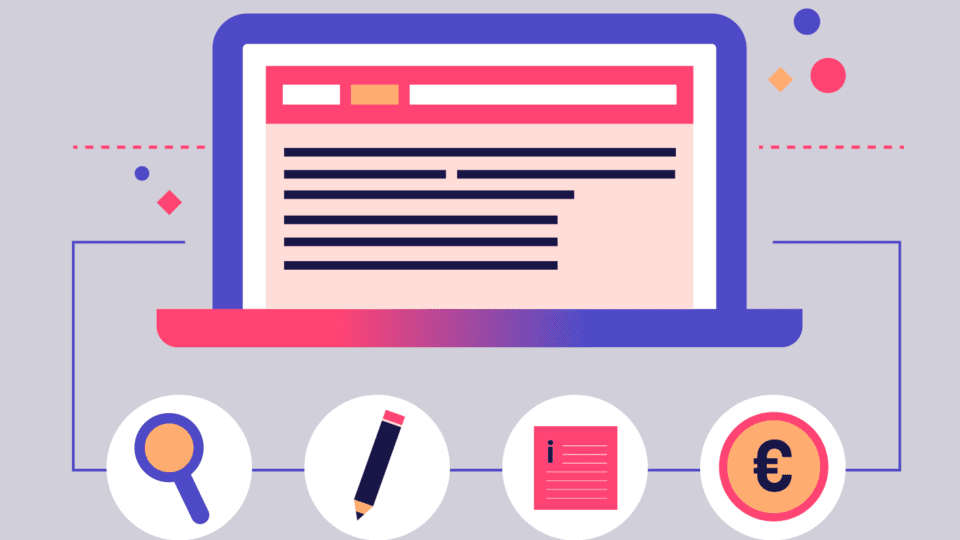How to Create Content That Sells and Converts

What is Content Selling?
It’s a common marketing rule of thumb that it can take between seven and twelve contacts to turn a lead into a buying customer. During the time it takes for a potential customer to convert, brands need to find ways to keep in touch with the leads to keep the process rolling and to keep your brand top-of-mind. This process of consistent messaging in the period between lead and conversion is referred to as content selling.
So how often should you contact your leads, in what ways should you contact them, and what should you say to them? That’s what you’ll find out in this blog post!
Do you need help with creative and converting content?
Content Selling vs Content Marketing: What’s the Difference?
Content marketing is focused on creating and distributing valuable, relevant, and consistent content to attract a clearly defined audience who is not yet a buying customer, or to retain existing customers of yours. Content marketing often takes place on a brand’s social media accounts or website and can be, for example, blog posts about relevant topics (like this one), tips and tricks, news and trends within a certain industry, or downloadable material like guides, templates, reports, etc.
Content selling, on the other hand, is targeting a specific person who has already entered the sales funnel by interacting with your brand. This happens when a person, for example, downloads something you’ve produced or by requesting a demo or similar actions where he or she has given their contact information to you. Content selling, unlike content marketing, often takes place in more secluded approaches, like emails or retargeting ads, for example. Other examples of content selling are Q&A, case studies, testimonials, product comparisons, etc.
To speak in marketing terms: content marketing targets cold leads, people who are unfamiliar with your brand or haven’t shown an eagerness to become a customer. Content selling targets warm or lukewarm leads; people whose actions indicate a willingness to purchase your products or services.

Do you need to include content selling in your marketing strategy?
Why should you care about content selling? Needless to say, leads are important to your brand and you’ve probably worked hard to gain them. Unfortunately, the hard truth is that leads often forget that you exist within the blink of an eye due to the heavy concurrence of brands and offers.
The purpose of content selling is to:
- Remind your potential customers that you exist
- Provide engaging information designed to increase their interest
- Answer their potential questions
- Approach their needs customized according to where they are in the buyer’s journey
Content selling can also be a strategy for up-sales by reminding customers to purchase from you again. Examples of up-sales content selling are ads or emails showing products or services that go along well with previous purchases or customized offers of products a customer has shown interest in.
PS. Another great benefit of content selling is that even if you don’t succeed in turning a lead into a buying customer, it’s still great for brand recognition and referrals/word of mouth.
How to Create Content That Sells and Converts
Okay, so now you know the background to why content selling is important and why it increases the effectiveness of turning leads into customers. But how do you create content that sells and converts?
We’ve broken this question down into three steps.
1. Who is your target audience?
Step number one is to adjust your communication accordingly to the person you are addressing: is he or she a person who will ultimately make the buying decision? Or will that person need to pass your information on to a decision-maker within their organization?
This will of course affect the tone of voice and angle in your messaging.
Download a complete audience analysis template!
2. How many leads do you need to close a deal?
For step number two you need to look at your sales data or include your sales department in order to find out how many contacts it has taken previously for your team to close a sale.
This data will help you determine how often to contact your leads, and in what ways to contact them. If several contacts are needed to close a deal, having multiple channels or formats to reach them is a good idea; both in order not to bore your audience, but also to increase your chances of conversion. You probably have that one company that keeps sending the same email over and over again. It becomes spammy and often results in the receiver unregistering from the email list.
3. What type of content should you create to drive sales?
Step number three picks up where step number two left off: when creating content selling it’s recommended to use several formats. Some people prefer text while others like video – make sure you’re not only addressing one type of person.
Further, make sure your content has a chronological order. Sending similar or repeating content to the same person will make you appear spammy, and you risk losing the lead. Plan your content to complete each other, if you answered common Q&As in an email, follow that up with an instructional video in the next message, for example.
Get started and build a brand story!
Summary
To wrap this blog post up, here are the important things you should remember about content selling:
- Content selling is a strategy to effectively turn leads into customers
- Content selling is also a strategy for up-sales
- Content selling makes your brand top of mind and distinguishes you from competitors
- Content selling creates and increases trust between you and your audience
- Content selling increases brand recognition and might contribute to referrals and recommendations from your leads to other people
